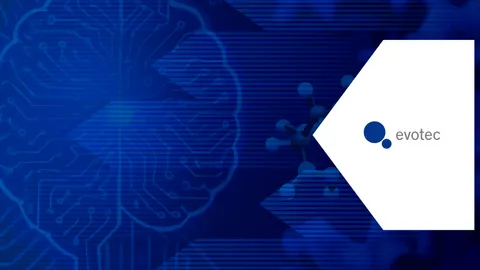From Packaging to Plate: Tracing the Path of PFAS Contamination in Our Food Supply
New EU laws are pushing for safer food through rigorous testing and regulation.

Per- and polyfluoroalkyl substances (PFAS) have become a significant concern in food safety all around the globe. These synthetic chemicals, often referred to as "forever chemicals" due to their persistence in the environment and human body, have been widely used in various industrial applications, including food packaging and non-stick cookware.
The presence of PFAS in food can be attributed to a myriad of contamination sources throughout the food chain. These include not only the production, processing and packaging of food items but also environmental factors such as contaminated water, soil and animal products. Each of these pathways intricately weaves into the larger tapestry of food safety, highlighting the complex interplay between our food systems and the environment.
A recent study on food contact materials (FCM) in the Belgian market has revealed alarming contamination levels of PFAS, particularly in paper analogues made from materials like sugar cane and wheat pulp. The researchers found that these alternatives to traditional paper exhibited PFAS contamination levels up to 10 times higher, raising significant health concerns for consumers. Risk assessments highlighted potential dangers associated with commonly used items such as coffee cups and food trays, linking these substances to adverse health effects, including immune system disruption.
Another study analyzing 218 fish samples from 6 common species from Swiss lakes found that perfluorooctane sulfonic acid (PFOS) and perfluorohexane sulfonic acid (PFHxS) often exceeded European safety limits. Notably, the study highlighted the significant bioaccumulation potential of PFAS in freshwater fish species and the importance of wild fish as bioindicators of PFAS presence in the environment.
Traditional analytical techniques, such as gas chromatography-mass spectrometry (GC-MS) and liquid chromatography-tandem mass spectrometry (LC-MS/MS), have been the backbone of PFAS testing. These methods offer high sensitivity and specificity, enabling scientists to detect trace levels of PFAS compounds in complex food matrices.
This article will delve deeper into the current analytical methods and regulations surrounding PFAS testing in Western European countries, highlighting the challenges and opportunities that lie ahead for food scientists in this vital field.
New regulations in the Western EU and testing requirements
In 2020, at the request of the European Commission (EC), the European Food Safety Authority (EFSA) updated its risk assessment of PFOS and PFOA and extended it to perfluorononanoic acid (PFNA) and perfluorohexane sulfonic acid (PFHxS). In its opinion, it concluded that parts of the European Union (EU) population exceed the tolerable weekly intake of PFAS. The EFSA has defined a limit of four PFAS that may be safely consumed in food to protect against health impacts and set the tolerable weekly intake of 4.4 nanograms per kilogram of body weight per week. An adjusted EU Regulation from 2023 includes maximum levels for perfluoroalkyl substances for a wide range of food products.
The EFSA collects and analyzes monitoring data on PFAS contamination in food annually. EU Member States monitor the presence of PFASs in a wide range of foodstuffs including fruits, vegetables, cereals, nuts, oilseeds, food for infants and young children, food of animal origin and beverages. The analyses should be carried out using a method of analysis that has been proven to generate reliable results with expected limits of quantification of the analytical methods.
Besides PFAS concerns for foodstuffs, the European Chemicals Agency (ECHA) is evaluating an EU-wide universal restriction on around 10,000 PFASs in terms of the risks for humans, the environment and the impacts on society. This restriction proposal is currently being assessed for a wide use of PFASs in many industrial applications and could affect multiple economic activities. After an extensive public consultation period, ECHA will further progress its opinion in 2025. The EC will ultimately decide on the restriction in consultation with EU Member States.
In summary, the EU has implemented several regulations, listed below, to control PFAS levels in food with the intention to minimize exposure to PFAS and protect health and environment.
- EC regulation on maximum levels for certain contaminants in food, which includes maximum levels for PFAS in a wide range of foodstuffs.
- EC Water Framework Directive, which sets quality standards for water bodies and imposes limits on PFAS in drinking water and surface waters to ensure water safety.
- Food Contact Materials Regulation, which regulates materials that come into contact with food.
- Persistent Organic Pollutants (POPs) Regulation, which controls the release of POPs into the environment, including certain types of PFAS.
- Registration, evaluation, authorization and restriction of chemicals (REACH) Regulation, which requires companies to register and evaluate chemicals, with provisions to restrict substances like PFAS if they pose risks to health or the environment.
Analytical tools to enable PFAS testing
As the focus on PFAS testing shifts from environmental to food and beverage analysis, the circumstances surrounding the analysis process and the selection of consumables have become more critical than ever. Given the increasingly stringent regulations, especially in Europe where maximum PFAS levels in food products now fall into the sub-nanogram range, it is essential that every step of the analytical workflow is carefully controlled. Even the slightest PFAS contamination from sample collection, solvents or consumables can undermine the accuracy and reliability of the results. To minimize the risk of introducing PFAS from non-target sources, laboratories must select consumables that have been rigorously tested to ensure they do not contribute detectable PFAS levels. This includes using high-quality solvents verified to meet stringent specifications, as well as solid phase extraction (SPE) cartridges, filters and LC columns that have been validated to maintain low PFAS backgrounds. For accurate sample preparation, it is also crucial to employ extraction methods that have been validated through real-world applications, ensuring that they are fit for purpose and do not add unexpected contaminants to the sample.
Additionally, the use of certified reference materials (CRMs) is indispensable for confirming that the entire workflow, from sampling through analysis, is functioning properly. By regularly incorporating these validated materials, laboratories can ensure their methods are consistent and their results reliable. Routine system-suitability checks should also be performed to monitor the integrity of the setup and detect any drift in background levels, which can signal contamination from consumables or system components. By following a "clean chain" approach, where each consumable is tested for PFAS contamination and the entire analytical system is monitored regularly, laboratories can confidently achieve the low detection limits required for regulatory compliance and scientific accuracy. This holistic approach, ensuring that every element in the workflow is optimized, has become a fundamental requirement as PFAS testing moves into more complex and regulated sectors like food safety.
Sample preparation consumables for PFAS testing in complex food matrices: A comprehensive workflow
PFAS testing in food matrices requires meticulous sample preparation to ensure accurate and reliable analytical results. The complexity of food matrices and the persistent nature of PFAS compounds necessitate a systematic approach to sample handling, from sample collection and preservation through final analysis. Important considerations and potential contamination sources at each step are described below.
Collection and storage – Building on good foundations
The sample preparation workflow begins with proper collection and storage consumables. PFAS-free glass containers or certified plastic containers are essential to prevent cross-contamination, as traditional laboratory plastics may contain PFAS compounds. Sample labels, chain-of-custody forms and specialized freezer storage containers capable of maintaining temperatures between -20 °C to -80 °C form the foundation of sample integrity preservation.
Homogenization and initial processing
Achieving sample uniformity requires specific consumables including disposable blender cups or homogenizer vessels, PFAS-free spatulas and scoops and contamination-free weighing materials. These tools ensure representative sampling while maintaining the chemical integrity of PFAS compounds throughout the initial processing stages.
Extraction protocol consumables
The extraction phase demands careful selection of solvents, primarily methanol and acetonitrile, along with polypropylene centrifuge tubes for sample processing. QuEChERS (quick, easy, cheap, effective, rugged and safe) kits, containing magnesium sulfate, sodium chloride and buffering salts, provide an effective approach for complex food matrices. PFAS-free pipette tips and vortex tubes complete the extraction toolkit, enabling efficient compound recovery.
Purification and cleanup requirements
Sample cleanup relies heavily on SPE cartridges, including weak anion exchange (WAX), graphitized carbon black (GCB), hydrophilic-lipophilic balance (HLB) and (divinyl benzene (DVB) adsorbents, supported by polytetrafluoroethylene (PTFE)-free SPE manifolds or automated sample preparation instruments and their related accessories. Sample filtration is an important part of the workflow that includes syringe filters with 0.2 μm PTFE-free or nylon membranes and disposable syringes, and appropriate collection vials ensure effective removal of matrix interferences while preserving target analytes.
Final preparation and concentration
The concentration phase utilizes nitrogen gas for blowdown concentration, specialized evaporation tubes and autosampler vials with compatible caps and septa. Dilution solvents enable final volume adjustments to meet analytical requirements and optimize detection limits.
Quality assurance integration
Robust quality control requires blank matrices for method validation, standard CRMs for accuracy verification and internal and surrogate standards for recovery assessment. Calibration standards ensure analytical method reliability throughout the testing process.
Documentation and traceability
Comprehensive documentation consumables, including sample tracking sheets, barcode labels and laboratory record-keeping materials, maintain chain of custody and enable full traceability of analytical results.
Conclusion
Successful PFAS testing in food matrices depends on the systematic application of appropriate consumables throughout each workflow stage. This comprehensive approach ensures analytical integrity while meeting regulatory requirements for food safety assessment. Proper consumable selection and workflow implementation are critical for laboratories conducting PFAS analysis in increasingly complex food matrices.






